The Japanese Buddha's Celestial Descent Thangka Painting
-
Estimated Delivery:Oct 27 - Oct 31
-
Free shipping is offered on all orders totaling over $100
Product Description
This captivating Thangka painting beautifully portrays the revered scene of the Buddha's Descent from Tushita Heaven, a momentous event marking his return to the human realm. A truly celestial masterpiece of Tibetan Buddhist art, this piece offers a profound visual narrative of devotion and spiritual homecoming. It is meticulously crafted on fine cotton canvas using the traditional Himalayan thangka technique, a sacred artistry that infuses each detail with sacred meaning. The radiant glow of the scene and the intricate robes are brought to life with the subtle yet brilliant application of 24K gold, shimmering gracefully and enhancing the divine presence.
The central figure of the Buddha stands in a graceful, descending posture, his golden form emanating serene wisdom. His right hand is raised in a gesture of teaching or blessing, while his robes, adorned with exquisite patterns, flow elegantly around him. He is flanked by two celestial beings, Brahma and Indra, who respectfully accompany him on clouds, showering flowers in homage. The entire scene is bathed in a soft, ethereal light, with golden rays radiating from a central halo, creating an atmosphere of transcendence and spiritual grace. The delicate butterflies fluttering around add a touch of ephemeral beauty. This piece's peaceful and awe-inspiring presence makes it a perfect meditation art focus for reflection on spiritual journeys and enlightenment.
As a significant form of spiritual home decor, this thangka is more than a beautiful image; it is a sacred narrative, a visual representation of the Buddha's boundless compassion and his return to guide humanity. It serves as a focal point for devotion, a teaching aid, and a profound spiritual bridge. Bring this stunning piece of authentically handcrafted in Kathmandu, Nepal art into your life and invite the blessings of enlightened guidance, harmony, and transcendent beauty into your personal sanctuary.
The thangka’s enduring colors come from lapis lazuli, cinnabar, and malachite, applied with traditional hand-painting techniques.
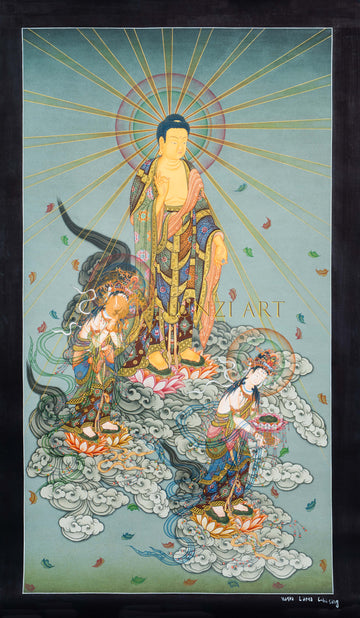
The Japanese Buddha's Celestial Descent Thangka Painting
CONSECRATION OF PRODUCT
For requests for consecrations/blessings, we can take the thangka to monasteries or Rinpoches from the nearby Boudha Stupa. We kindly ask you to offer $50 for the monasteries for blessings/consecration services.
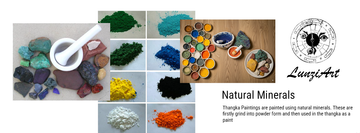
Natural Colors in Thangka
All the colors used in the thankgas are made from natural minerals. Ground into pigments, they carry the essence of the earth. Unlike artificial colors, these natural tones shine with honesty, adding depth, life, and spiritual meaning to each canvas.
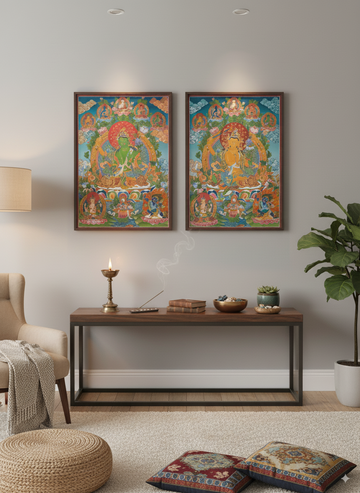
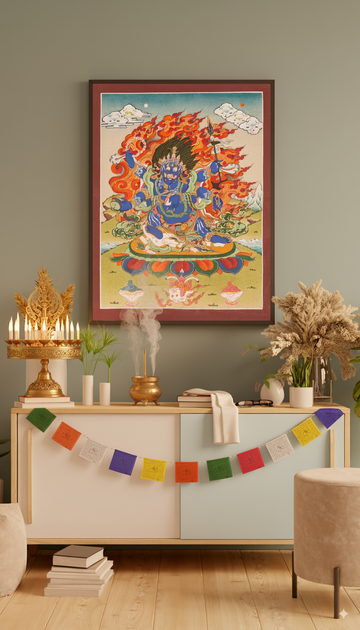
Thangka in Modern Spaces
In modern spaces, thangkas bring together tradition and contemporary design. Once used mainly in temples, these sacred artworks now enhance homes, offices, and galleries with their vibrant colors and deep symbolism. They create harmony, inspire reflection, and serve as meaningful focal points in today’s interiors.
We offer free shipping worldwide.
Our products are handcrafted, each statues and signing bowl have their own specification.
Since the work is based on handmade and artistic skills, the product might vary from the picture.
Although we have real product pictures, images, and colors may appear differently on your screen, due to lighting and certain details that might not have been captured by the camera.
Please refer to product descriptions and specifications for accurate details. Also, consider if you see any minor flaws.
Contact us directly for any queries.
We want you to be 100% satisfied with your purchase.
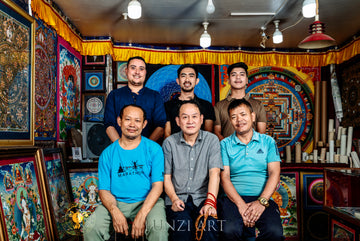
Kaila and Deepak Lama
Kaila and Deepak Lama, master Thangka artists from Timal, Kavre, elevate Nepal’s spiritual heritage through LunziArt. Trained in their family’s sacred craft, they create meditative masterpieces with vibrant pigments and 24K gold. From their Thamel store to global markets, their artistry preserves and shares Nepal’s Buddhist traditions. Their work embodies resilience and cultural devotion.





